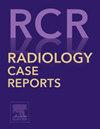Successful treatment of a recurrent dissecting aneurysm with flow diverter placement following occipital artery–posterior inferior cerebellar artery bypass
Q4 Medicine
引用次数: 0
Abstract
Branch involvement can serve as a predicting factor of incomplete occlusion after flow diverter (FD) treatment, including pipeline embolization device. This study reports a case of subarachnoid hemorrhage owing to bilateral vertebral artery dissection with parent artery occlusion to the left side and stent-assisted coiling to the right side. However, a marked enlargement of the dissected lesion was observed at the right dissecting aneurysm at 6 months. Considering that the posterior inferior cerebellar artery (PICA) originating from the aneurysm could prevent aneurysm occlusion after the FD, we first conducted open surgery to perform a bypass from the occipital artery to the PICA and occluded the PICA origin to eliminate blood flow from the dissection site. Subsequently, we placed a pipeline embolization device at the same location. Complete occlusion of the aneurysm was confirmed after 6 months. Thus far, only one case report of a recurrent middle cerebral artery aneurysm treated with an FD following bypass has been reported. This is the first report of a similar procedure applied to the posterior circulation and dissecting aneurysm. This report highlights the potential for successful outcomes when branches arising from an aneurysm are occluded via bypass prior to the placement of an FD.
枕动脉-小脑后下动脉搭桥术后置放分流器成功治疗复发性夹层动脉瘤
分支受累可以作为血流分流器(FD)治疗后不完全闭塞的预测因素,包括管道栓塞装置。本研究报告一例蛛网膜下腔出血,原因是双侧椎动脉夹层,左侧母动脉闭塞,右侧支架辅助盘绕。然而,在6个月时,在右侧夹层动脉瘤处观察到明显的夹层病变扩大。考虑到起源于动脉瘤的小脑后下动脉(PICA)可以防止FD术后动脉瘤闭塞,我们首先进行了开放性手术,从枕动脉到PICA进行搭桥,闭塞PICA起源,消除夹层部位的血流。随后,我们在同一位置放置了管道栓塞装置。6个月后证实动脉瘤完全闭塞。迄今为止,仅报道了一例脑中动脉瘤在搭桥术后经FD治疗的复发病例。这是类似手术应用于后循环和夹层动脉瘤的首次报道。本报告强调了当在放置FD之前通过旁路闭塞动脉瘤分支时,成功结果的可能性。
本文章由计算机程序翻译,如有差异,请以英文原文为准。
求助全文
约1分钟内获得全文
求助全文
来源期刊

Radiology Case Reports
Medicine-Radiology, Nuclear Medicine and Imaging
CiteScore
1.10
自引率
0.00%
发文量
1074
审稿时长
30 days
期刊介绍:
The content of this journal is exclusively case reports that feature diagnostic imaging. Categories in which case reports can be placed include the musculoskeletal system, spine, central nervous system, head and neck, cardiovascular, chest, gastrointestinal, genitourinary, multisystem, pediatric, emergency, women''s imaging, oncologic, normal variants, medical devices, foreign bodies, interventional radiology, nuclear medicine, molecular imaging, ultrasonography, imaging artifacts, forensic, anthropological, and medical-legal. Articles must be well-documented and include a review of the appropriate literature.
 求助内容:
求助内容: 应助结果提醒方式:
应助结果提醒方式:


